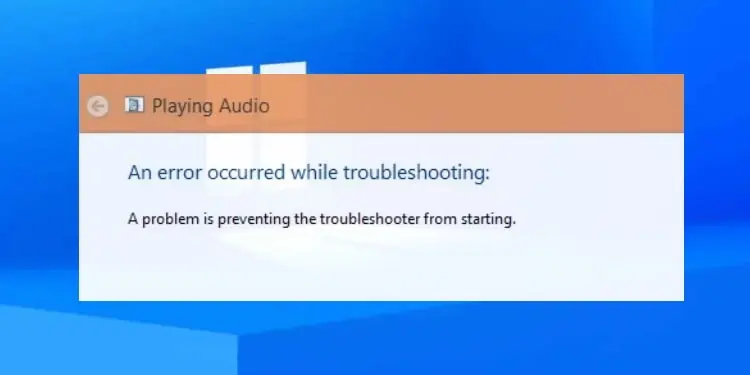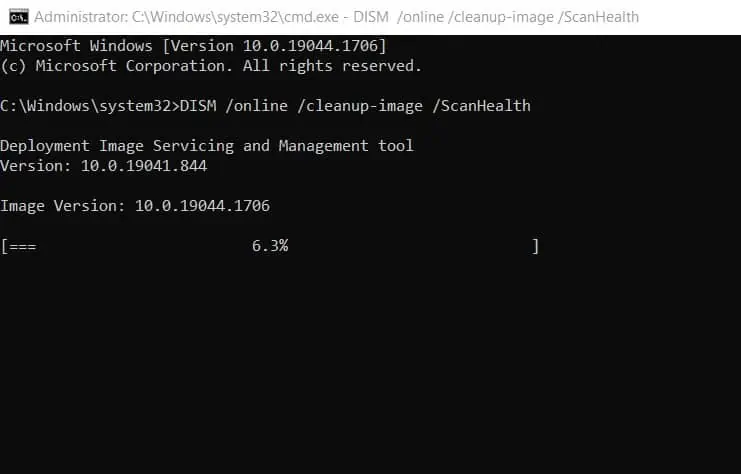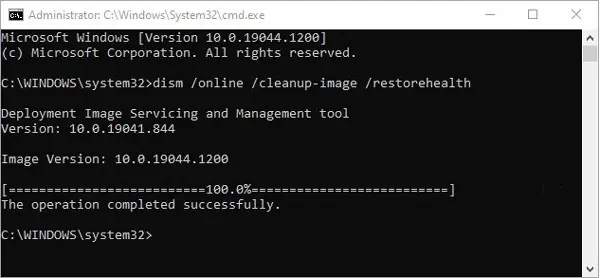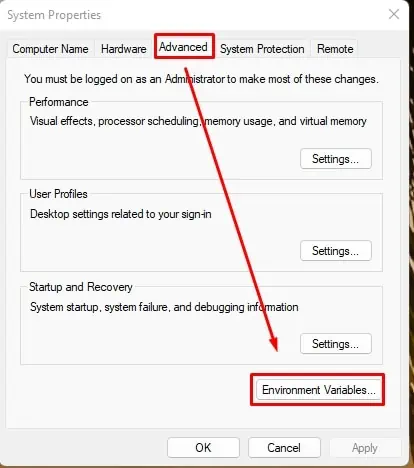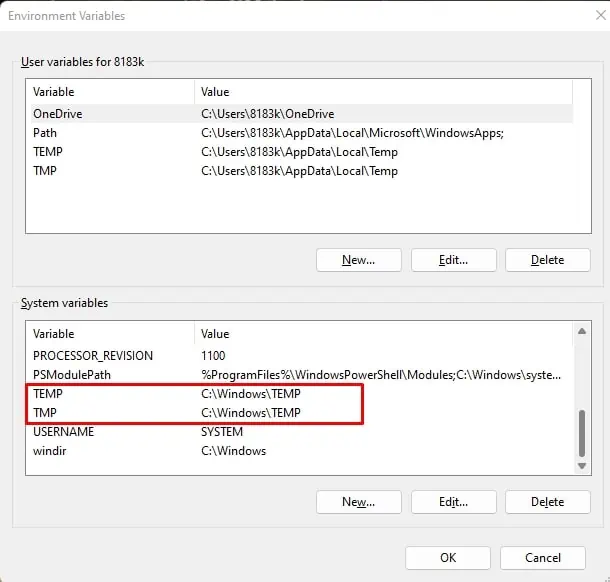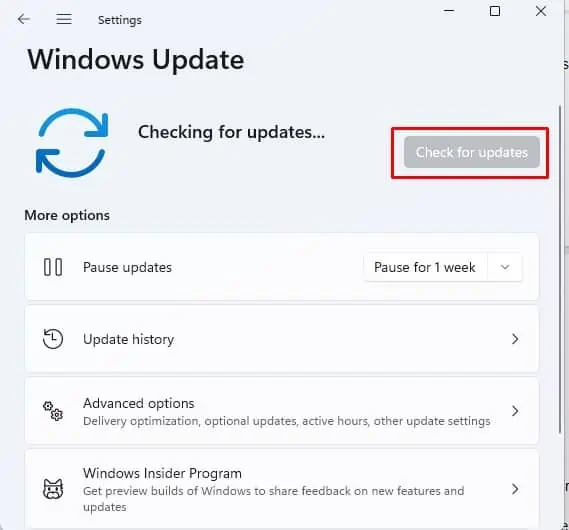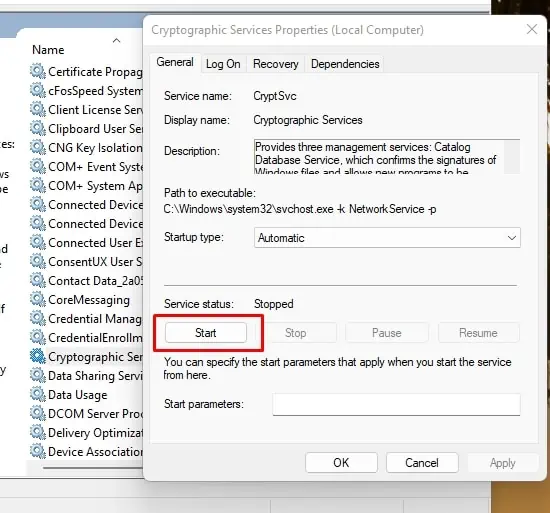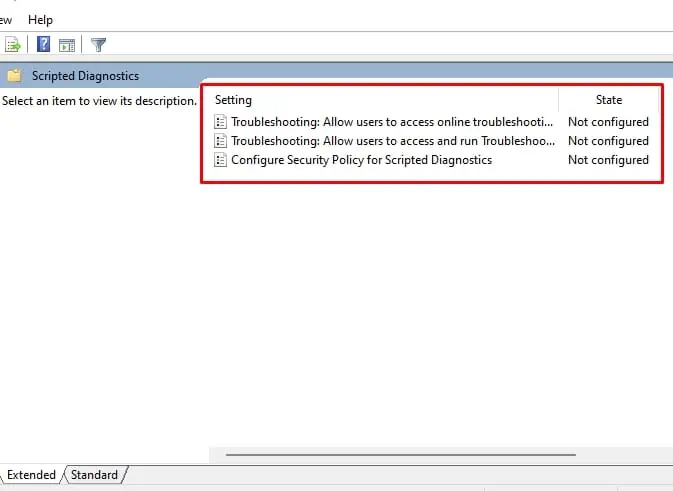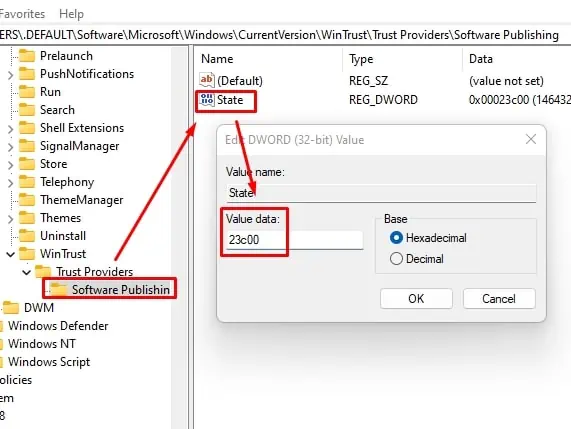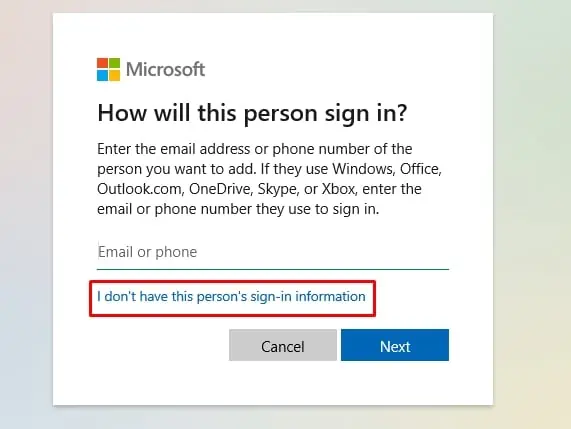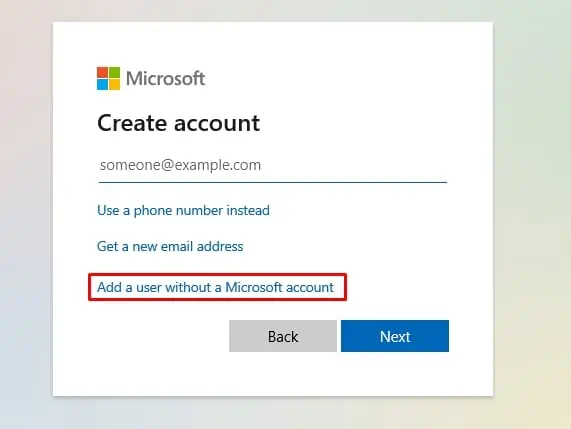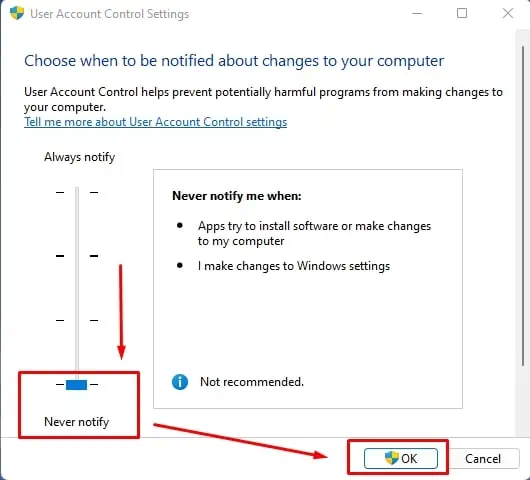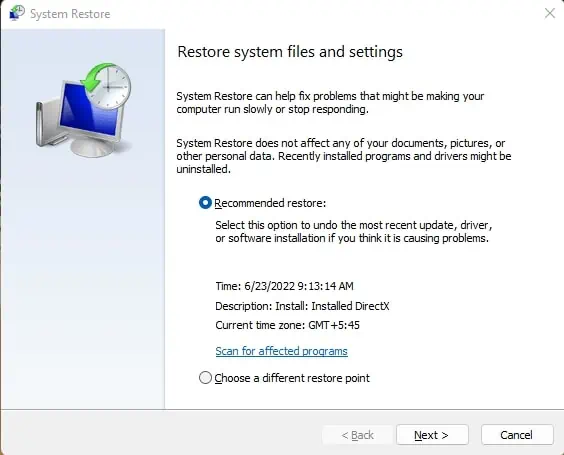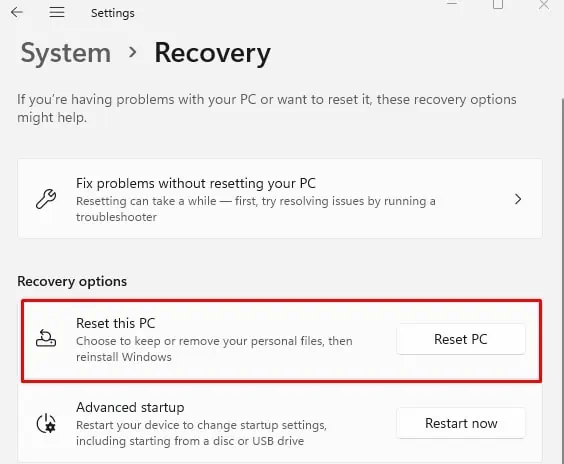Windows has many features and functions, and if one of them fails, you can always use the Windows troubleshooter to identify and resolve the problem.
But what happens when Windows Troubleshooter itself does not work anymore? Is there any tool or method to diagnose the problem?
Fortunately, there is. And here’s our detailed troubleshooting guide to find exactly that.
How Do You Know That the Troubleshooter Is Not Working?
- A problem is preventing the troubleshooter from starting 0x80070002, 0x8e5e0247
- Windows Troubleshooting error code 0x803c010b
- An error occurred while troubleshooting 0x80300113
How to Fix the Troubleshooter Not Working?
Below we have a list of 15 fixes for you to try for when your Troubleshooter is not working in Windows. We hope you succeed in finding one that works for you!
Fix Corrupted Files With SFC and DISM Tools
Troubleshooter failing could indicate a corrupted system file. You can employ the System File Checker (SFC) and Deploy Image Service Management (DISM) tools to identify and fix any corrupted system files.
First use the DISM tool, restart the system, then use the SFC tool (usage outlined below).
DISM Tool
- Press Win + R, type in cmd and press Ctrl + Shift + Enter to launch the elevated command prompt.
- At the command prompt, type in:
DISM /online /Cleanup-image /ScanHealthand press enter.
- After the scan completes, type in:
DISM /online /Cleanup-image /RestoreHealthand press enter.
- Restart the computer
SFC Tool
- Launch the elevated command prompt.
- Type in:
sfc /scannowand press enter.
- Restart the computer.
Set Temporary Folders Path
The Windows Troubleshooter will not work if Windows cannot locate the Temporary Folders, where it stores temporary files. If this is the case, you will need to set the Temporary Folders path.
- Press Win + I to launch Settings.
- Navigate to System > About.
- Under Device Specifications, click on Advanced system settings. This will launch the System Properties window.
- In the Advanced tab, click on Environmental variables.

- Under System variables, check TEMP and TMP paths. They should be set to
C:\Windows\Temp. If this is already the case, set it toC:\Tempinstead.
- Restart the computer.
Run Disk Cleanup
Old temporary files stored in your system could also prevent the Windows Troubleshooter from functioning properly. Run Disk Cleanup to see if that solves the issue.
- Press Win + R and type in cleanmgr.
- Under Files to delete, put a tick mark on Temporary files and click OK.

- Click Delete files and wait for the process to complete.
Update Windows
Sometimes a simple Windows Update can fix some issues. You can try updating your Windows to see if this fixes the problem.
- Press Win + I to launch Settings
- Navigate to Windows Update and click on Check for updates.

- Install any available updates and wait for the process to complete.
Start Cryptographic Services
If the Cryptographic Services is not running, or if it has stopped for some reason, then Windows Troubleshooter will not function. If this is the case, you will need to start the Cryptographic Service.
- Press Win + R and type in
services.msc. - Find Cryptographic Services and double-click on it.
- If the Service status is Stopped, click on Start.

- Wait for the service to start and then try the troubleshooter again.
Boot Into the Safe Mode
You can boot into Safe Mode and see if you can run the troubleshooter from here.
Windows 11
- Press Win + R to launch Settings.
- Navigate to System > Windows update > Advanced options > Recovery.
- At Advanced startup, click on Restart now.
- Navigate to Troubleshoot > Startup Settings > Restart
- Once the computer boots, choose “Enable Safe Mode with Networking.”
- Run the Troubleshooter.
Windows 10
- Press Win + R to launch Settings.
- Navigate to Update & security > Recovery.
- Under Advanced startup, click on Restart now.
- Navigate to Troubleshoot > Startup Settings > Restart
- Once the computer boots, choose “Enable Safe Mode with Networking.”
- Run the Troubleshooter.
Disable Antivirus and Firewall
Sometimes your antivirus software(s) and firewall service (other than Windows Defender / Windows Security) could be stopping the Troubleshooter from searching for solutions over the internet and communicating with Microsoft servers.
Try to disable your third-party antivirus software and firewall temporarily to see if this allows you to run the Troubleshooter.
Clear DNS Cache
It is possible that your Troubleshooter is unable to connect to the internet because of an outdated or corrupted DNS cache stored locally on your computer. To address the accessibility issues with Microsoft Servers, which the Troubleshooter needs to diagnose problems, you need to flush DNS in your computer.
Try clearing the DNS cache and see if this fixes the issue.
- Press Win + R, type in
cmd, and press Ctrl + Shift + Enter to launch the elevated command prompt. - At the command prompt, type in:
ipconfig /flushdns.
- Restart the computer and run the Troubleshooter.
Change Group Policy
If you are getting “Troubleshooter has stopped working” error messages, the problem might lie with your group policy settings.
- Press Win + R and type in
gpedit.msc. - Navigate to Computer Configuration > Administrative Templates > System > Troubleshooting and Diagnostics > Scripted Diagnostics.
- Make sure that none of the options on the right pane have been set to Disabled. Set them to either Enabled or Not Configured.

Repair .Net Framework Installation
Some users have reported that repairing .Net framework installation resolved their issue with the Troubleshooter not working.
- Press Win + R and type in:
control panel. - Navigate to Programs > Programs and Features.
- Find
.NetFramework from the list of programs and right-click on it. - Choose Change > Repair.
Edit Your Registry
Some users have also found that making a change to their registry fixed their Troubleshooter problem.
- Press Win + R and type in:
regedit. - Navigate to:
Computer\HKEY_USERS\.DEFAULT\Software\Microsoft\Windows\CurrentVersion\WinTrust\Trust Providers\Software Publishing - Double click on the DWORD State and set the Value data to 23c00.

Create a New User Account
Windows Troubleshooter could be malfunctioning because your account has been corrupted. To see if this is the case, create a new account and run the troubleshooter on it.
To create a new account:
- Press Win + I to launch Settings.
- Navigate to Account > Add other users.
- In the account creation pop-up window, click on I don’t have this person’s sign-in information

- In the next screen, choose Add a user without a Microsoft account.

- Follow the on-screen instructions and set your new account Username and Password.
- Log onto the new account and run the Troubleshooter.
Temporarily Disable User Account Control (UAC)
UAC is an important feature of Windows Security feature that controls administrator access granted to applications. If you disable UAC, applications that you launch can run with full administrative privileges without prompting you to grant administrator access.
Thus, it is not recommended that you keep UAC disabled in your machine. However, in this case, it can be useful to disable the UAC temporarily to troubleshoot the Troubleshooter problems.
- Press Win + R and type in
control panelto launch the Control Panel. - Select System and Security > Security and Maintenance.
- On the left pane, click on Change User Account Control Settings.
- Slide the slider all the way down to Never notify and click OK.

- Click Yes when prompted.
- Launch the Troubleshooter again and see if it works now.
When you’re done, launch the UAC settings again and slide the slider back to the default position.
Perform a System Restore
If you have created restore points in the past on your PC, then you can use System Restore to revert the system back to that point in time.
- Press Win + R and type in
rstruito launch System Restore. - Select either the recommended restore point or from one of the other restore points available.

- Click Finish and follow the instructions; wait for the process to complete.
Reset PC
As a last resort, you can try resetting your PC to fix the Troubleshooter not working problem.
Windows 11
- Press Win + I to launch Settings.
- Navigate to Windows Update > Advanced options > Recovery.
- Under Recovery options, click on Reset PC

- Choose Keep my files and follow the instructions.
- Wait for the PC to reset.
Windows 10
- Navigate to Settings > Update and Security.
- Select Recovery from the left pane.
- Under Get started, click on Reset this PC.
- Choose Keep my files and follow the instructions.
- Wait for the PC to reset.
Frequently Asked Questions
How Do I Manually Run Troubleshooter on Windows 10?
- Press Win + I to launch Settings.
- Navigate to Update & Security > Troubleshoot.
- Choose the category of troubleshooting you want to run, then click Run the troubleshooter.
- Wait for the troubleshooter to diagnose the problem, then select one of the options presented to resolve the problem.
- Wait for the troubleshooter to complete the process.
How Do I Manually Run Troubleshooter on Windows 11?
- Press Win + I to launch Settings.
- Navigate to System > Troubleshoot.
- Click on Other troubleshooters.
- Click on the Run button to the right of the option that best reflects your problem.
- Follow the on-screen instructions.

